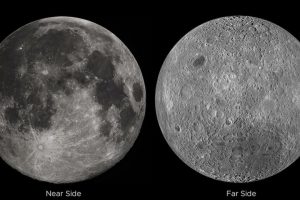
© Shutterstock
Dr Munazza Alam, USA
The beginning of October ushers in ‘Nobel season’, the time during which the year’s Nobel Prize winners are announced. Considered the most prestigious award in the fields in which they are bestowed, the Nobel Prize has become a symbol of utmost professional success and accomplishment. But what exactly is this prize and how are its winners selected? Below we outline some details on the Nobel Prize nomination and selection process. In four companion pieces, we describe the discoveries that were awarded the 2021 prizes in Chemistry, Physiology and Medicine, Physics and Economics.
What is the Nobel Prize?
The Nobel Prize is a prestigious award in honour of Alfred Nobel, a Swedish chemist, inventor, and entrepreneur who entrusted his fortune to the Nobel Prize Institution. The Prize is an international award distributed in the subjects of Chemistry, Physics, Medicine or Physiology, Literature, Economics, and Peace. Whereas the subject prizes recognize discoveries that serve ‘the greatest benefit to humankind’, the Peace prizes are awarded ‘to the person who has done the most or best to advance fellowship among nations, the abolition or reduction of standing armies, and the establishment and promotion of peace congresses’.
The prize itself consists of a gold medal depicting Alfred Nobel on one side and an image on the other depending on the institution awarding the prize, a cash award in the sum of ~10 million Swedish Krona (per full prize), and a personal diploma created by cutting-edge Swedish and Norwegian artists and calligraphers.
The prize in a given subject can be shared among no more than three individuals distributed between no more than two different works. Subject awards are given only to individuals, although the Peace prize can be awarded to institutions. First awarded in 1901, the Nobel Prize Institution has since awarded 609 awards to 975 laureates – including 58 women and individuals ranging in age from 17 to 97. The announcement of the Nobel laureates each year is an exciting time to see which subfields are recognized for their groundbreaking work.
Who is nominated?
The nomination process for Nobel Prizes begins in September of the year prior to the prizes being awarded. At this time, the Nobel Committee sends out nomination forms to about 3,000 prominent academics in the fields relevant to the subject prizes. For the Peace prizes, nomination forms are sent to government officials, previous Nobel Peace Prize laureates, and past and current members of the Norwegian Nobel Committee. Nominations must be submitted by January 31st of the award year. Based on these forms and additional names that may come up in the process, the Nobel Committee nominates around 300 potential laureates. The nominees have no knowledge that they are being considered for the Nobel Prize and the nominated names are not released publicly until 50 years after the prize is awarded. The nominations must occur within an individual’s lifetime, since posthumous nominations are not currently accepted under the prize terms. Nomination records of all previous awards from 1901 to 50 years ago are available on the nomination archive of the Nobel Prize foundation website.
How are the laureates selected?
From the list of nominees, the Nobel Committee prepares a list of preliminary candidates along with a report based on the advice of experts in the relevant fields. These documents are submitted to the Royal Swedish Academy of Sciences, the Nobel Assembly at the Karolinska Institute, the Swedish Academy, and the Norwegian Nobel Committee. These four prize-winning institutions select the laureates in each field based on a majority vote. Immediately after their vote, the decision is announced and cannot be repealed.
The laureates are then contacted via phone call to learn the good news – a complete surprise considering that the names of the nominees are private. The phone call is a personalized acknowledgement of the laureates’ hard work and dedication to their respective fields. While winning a Nobel Prize is the ultimate achievement for any scientist, it typically motivates and inspires the laureates to work even harder on more difficult topics – as evidenced by several examples of Nobel laureates who have won a second prize.
About the Author: Munazza Alam is an astronomer, National Geographic Young Explorer, and postdoctoral researcher at the Carnegie Earth & Planets Laboratory in Washington, DC. She also serves as a Deputy Editor for the Science Section in The Review of Religions.




Add Comment